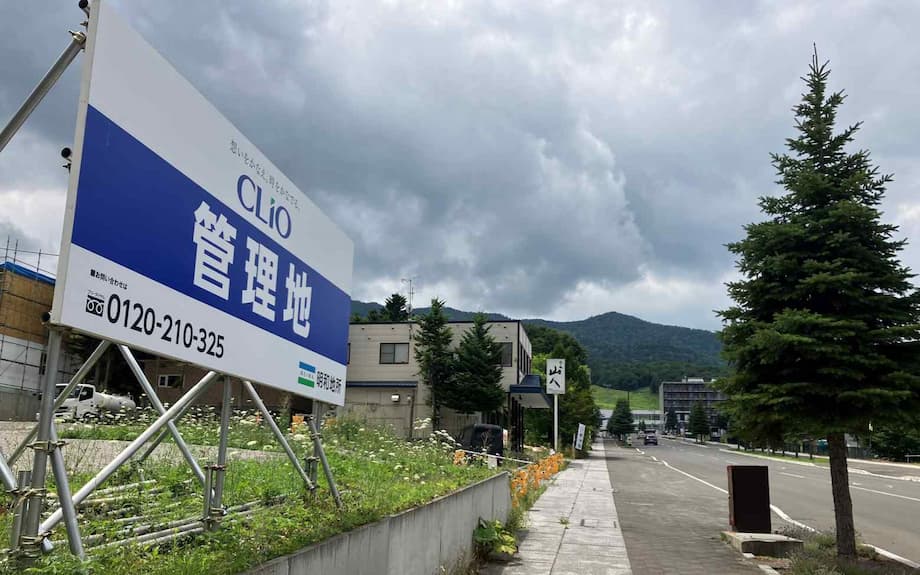Furano’s Meteoric Rise: From Quiet Town to Tourism Powerhouse
In the heart of Hokkaido, Japan, the once-sleepy town of Furano is undergoing a dramatic transformation. Known for its breathtaking lavender fields in summer and world-class powder snow in winter, Furano is now at the center of a tourism and property development boom that is reshaping its landscape, economy, and community. As developers and investors flock to the region, many are asking: Is Furano on track to become the next Niseko, Hokkaido’s internationally renowned ski resort?
- Furano’s Meteoric Rise: From Quiet Town to Tourism Powerhouse
- What’s Driving the Tourism and Property Boom?
- Developers and Investors: Who’s Building the New Furano?
- Why Furano? The Allure of Year-Round Tourism
- Economic Impact: Boon for Business, Challenge for Locals
- Balancing Growth and Preservation: The Road Ahead for Furano
- In Summary
Furano’s appeal is rooted in its unique dual-season charm. While many Japanese ski resorts struggle to attract visitors outside the winter months, Furano’s summer tourism—anchored by its iconic flower fields—has long rivaled its winter draw. In recent years, however, the surge in international visitors seeking pristine snow and authentic Japanese experiences has propelled Furano into the global spotlight.
What’s Driving the Tourism and Property Boom?
The numbers tell a compelling story. In 2019, Furano recorded 153,840 foreign tourist overnight stays—a staggering 330% increase from 2012 and a 2,500% jump from 2003. By 2023, total domestic and international tourist numbers reached 1.89 million, a 16% increase from the previous year and nearly a full recovery to pre-pandemic levels. The town now welcomes about 250,000 foreign overnight guests annually, a 4.2-fold increase over the past decade.
This influx has had a dramatic impact on the local property market. The Kitanomine area, adjacent to the Furano Ski Resort, has seen residential land prices soar fivefold in five years, marking the highest growth in Japan. In 2023 alone, Standard Land Prices in Kitanominecho rose 20.1% year-on-year, while government-assessed land values near the ski slopes surged 27.1%—outpacing even the famed Niseko region. Some plots now fetch up to 2.5 million yen per square meter, with market prices for land rising 300–500% since 2017.
According to a recent Nikkei Asia report, this surge is part of a broader trend across Japan, where tourism-driven land price increases are reshaping both urban and rural markets. In 2025, the average price of land in Japan rose 2.7%, the fastest pace in over a decade, with Furano and other tourist hotspots leading the charge.
Developers and Investors: Who’s Building the New Furano?
The property boom has attracted a wave of domestic and international developers eager to capitalize on Furano’s rising profile. In a notable example, Tokyo-based developer Meiwa Jisho recently acquired a 1,500-square-meter plot near the Kitanomine ski slopes, just 400 meters from the gondola and a short drive from Furano Station. The company plans to construct a hotel or hotel-condominium, taking advantage of flexible zoning regulations that allow for a mix of residential, retail, and hospitality uses.
Other developers are following suit. Zekkei Properties, known for luxury projects in Niseko, has launched Fenix Furano—a ski-in, ski-out condominium in the heart of Kitanomine village. Local companies like Flint Furano and Kuukan Inc. are also investing in boutique accommodations, private onsens, and vacation homes that blend modern amenities with Furano’s natural beauty. Kuukan Inc., for example, has introduced the “Shikauchi” real estate project, offering rental villas that cater to both private retreats and asset investment, and is actively involved in supporting sustainable tourism and property management in the region.
International interest is also on the rise. A 2019 Nikkei Style report noted that around 50 lots in Kitanominecho were owned by foreign buyers, reflecting Furano’s growing appeal as a global investment destination. The area is now filled with “FOR SALE” signs and foreign-language signage, and restaurants are bustling with international visitors.
Why Furano? The Allure of Year-Round Tourism
Furano’s unique selling point is its genuine year-round appeal. In winter, the town’s 470 acres of ski terrain cater to all skill levels and have hosted the FIS Alpine Ski World Cup and Snowboarding World Cup a dozen times. The region’s cold, dry interior produces some of the world’s lightest powder snow, drawing skiers and snowboarders from around the globe. Night skiing, high-speed lifts, and easy access to the slopes from the main town set Furano apart from more isolated resorts.
But it’s the summer months that truly set Furano apart. The town’s rolling hills burst into color with fields of lavender, sunflowers, poppies, and lilies, attracting over 1.5 million tourists each summer—nearly ten times as many as Niseko. Farm Tomita in Naka-Furano is the most famous destination, but the entire valley is dotted with flower farms and scenic spots. Day trips to nearby Biei’s Blue Pond and the Daisetsuzan National Park offer additional attractions for nature lovers.
Furano’s cultural offerings also play a role. The town was the setting for a beloved 1980s Japanese TV drama, drawing domestic fans to filming locations. Annual events like the Hokkai Heso Matsuri (Belly Button Festival) and the Furano Wine Factory add to the town’s vibrant calendar, ensuring there’s always something to see and do.
Infrastructure and Accessibility
Furano’s accessibility is another key factor in its rise. Located about two hours’ drive from Sapporo and within reach of major airports, the town benefits from improved transportation links that make it an attractive option for both domestic and international travelers. Enhanced infrastructure has also facilitated the construction of new hotels, condominiums, and vacation homes, further boosting the region’s capacity to accommodate visitors.
Economic Impact: Boon for Business, Challenge for Locals
The tourism and property boom has brought undeniable economic benefits to Furano. Local businesses have seen increased revenue, and the construction and hospitality sectors are experiencing a surge in job creation. The town’s hotel bed capacity is set to expand from 5,400 beds in 2023 to 6,400 beds by 2026, reflecting the growing demand for accommodation.
However, rapid development has also sparked concerns among residents. Soaring land prices have made it difficult for some locals to afford property, and the influx of foreign investment has led to fears of displacement and loss of traditional community character. The local population has actually declined even as the number of foreign residents has quintupled, highlighting the demographic challenges facing the town.
Some longtime residents lament the loss of Furano’s traditional charm and close-knit community. Issues such as improper garbage sorting, dangerous behavior like skiing on public roads, and trespassing on private farmland have caused friction between locals and visitors. Backcountry skiing accidents involving foreign tourists have increased, putting a strain on local rescue services.
Labor shortages are another pressing issue. The hospitality and caregiving sectors are struggling to find enough workers, with some hotels unable to operate at full capacity. Many local high school students plan to leave after graduation, prompting the city to organize job fairs and hands-on job experiences in an effort to retain young talent.
One longtime resident told a local reporter, “Furano’s future looks bright, but it’s hard not to feel like we’re losing a part of what made this place special. The town is changing so fast, and not everyone is able to keep up.”
Balancing Growth and Preservation: The Road Ahead for Furano
As Furano’s transformation accelerates, the challenge for local leaders, developers, and residents is to balance economic growth with the preservation of the town’s cultural and natural heritage. The economic impact of tourism is clear, but so too are the risks of overdevelopment and community displacement.
Efforts are underway to address these concerns. Local businesses and developers are increasingly focused on sustainable tourism and property management, with companies like Kuukan Inc. promoting environmentally friendly practices and community engagement. The city is also working to improve infrastructure and services to better accommodate both residents and visitors.
Ultimately, Furano’s future will depend on the ability of all stakeholders to work together. The town’s unique blend of natural beauty, year-round attractions, and authentic Japanese culture offers tremendous potential—but only if growth is managed in a way that benefits both newcomers and longtime residents.
In Summary
- Furano, Hokkaido, is experiencing a tourism and property boom, driven by its dual appeal as a winter sports and summer flower destination.
- Land prices in key areas like Kitanomine have soared, attracting domestic and international developers and investors.
- Major hotel and condominium projects are underway, with the town’s accommodation capacity set to expand significantly by 2026.
- The economic benefits are substantial, but rapid change has sparked concerns about affordability, community displacement, and loss of traditional charm.
- Labor shortages and demographic challenges persist, even as tourism numbers reach record highs.
- Efforts to balance growth with preservation of Furano’s unique character are ongoing, with a focus on sustainable tourism and community engagement.
- Furano’s future as a leading Japanese destination will depend on careful management of its transformation and the ability to address the needs of both residents and visitors.




